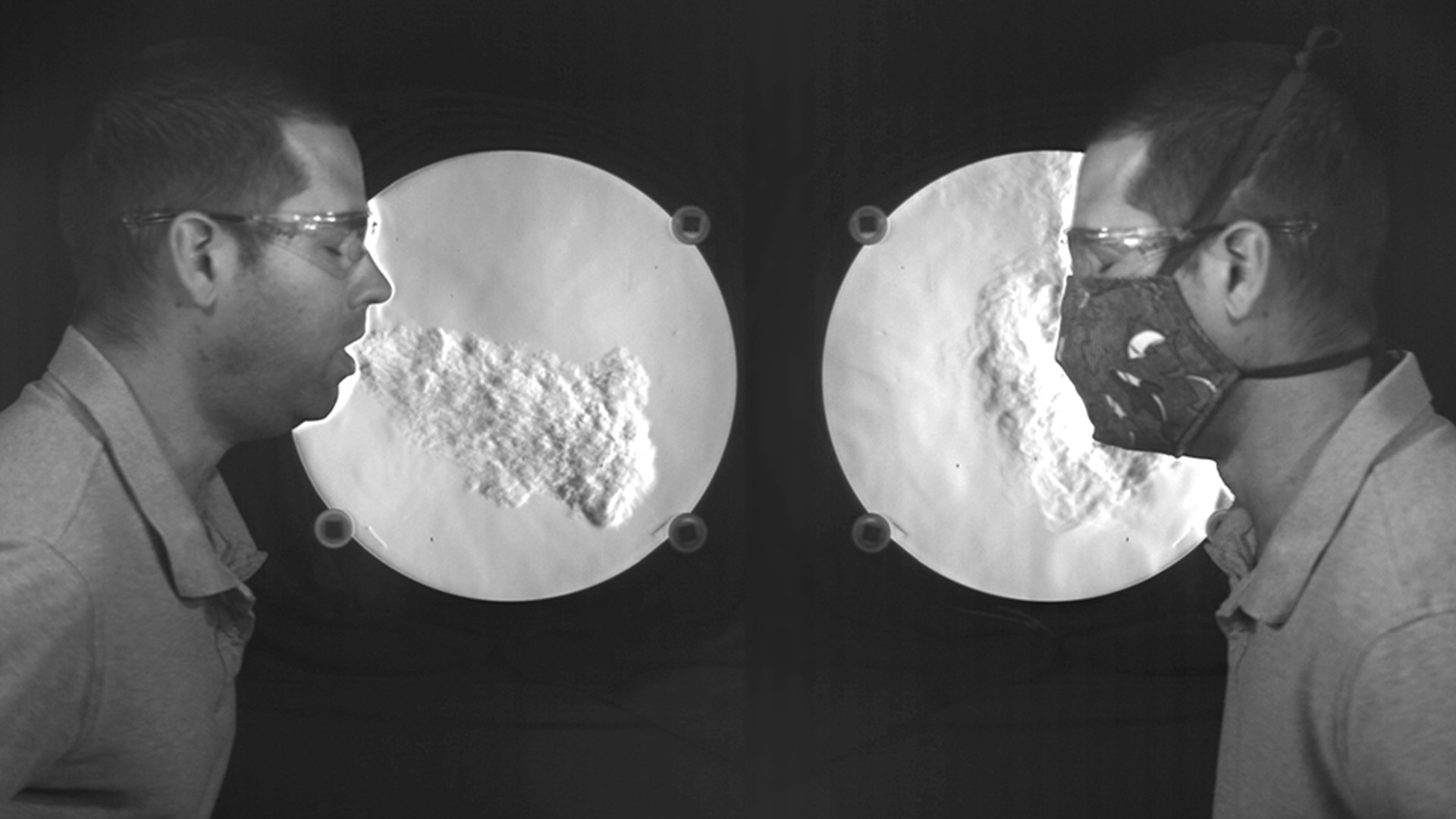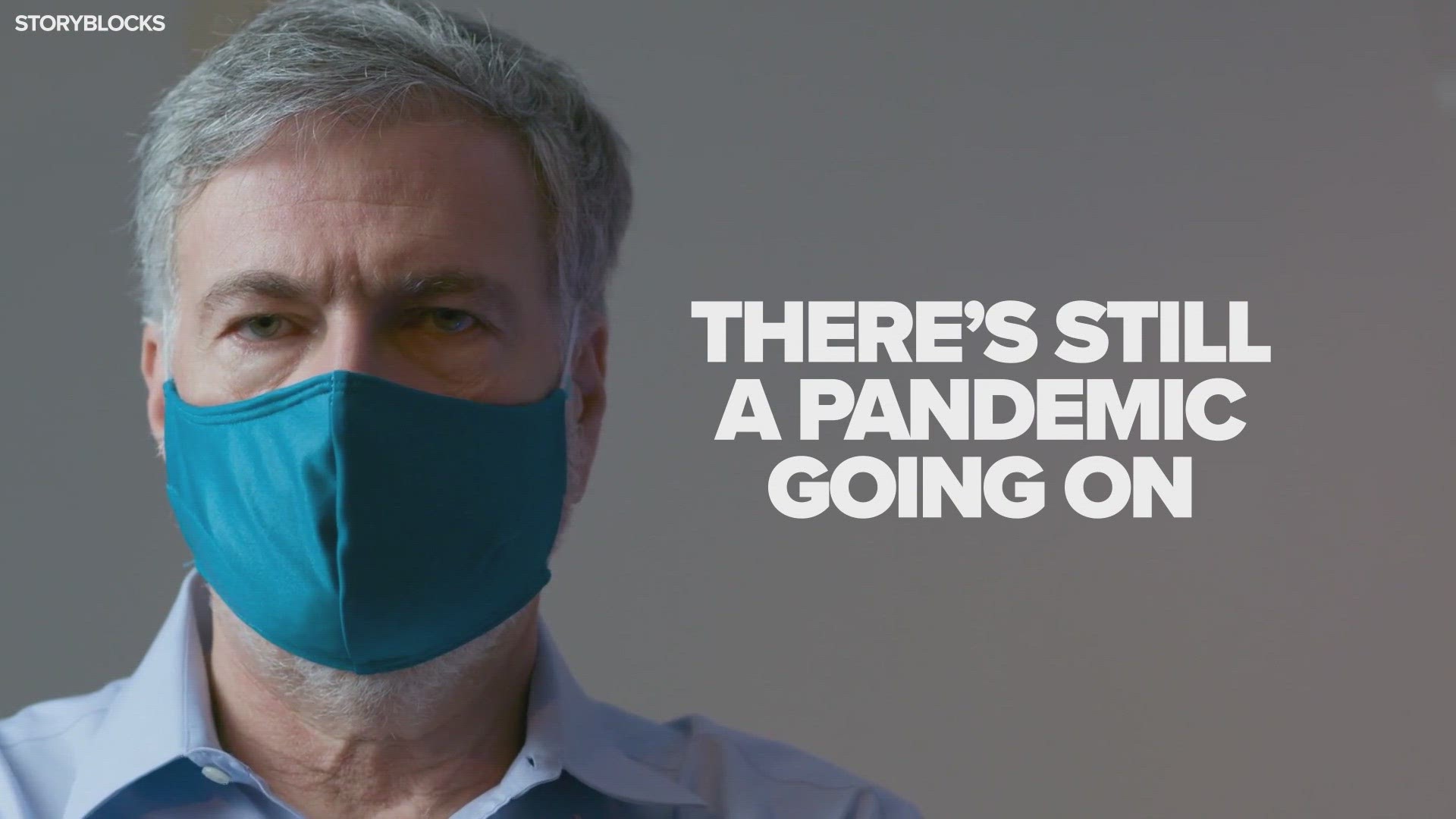An expert in fluid dynamics and mechanical engineering, while using an at-home lab during quarantine, developed a compelling video to illustrate the importance of wearing a face mask during the coronavirus pandemic. The video shows how much air is expelled from your nose and mouth both with, and without wearing a mask.
The Centers for Disease Control and Prevention, along with other health experts, say that, while rare, it is possible for the new coronavirus to be spread even by people who are infected, but show no symptoms. That's why there has been an increased push for people to wear face coverings, even if homemade, as a way to prevent transmission of the virus to others.
Matthew Staymates of the National Institutes of Standards and Technology says he has previously given visual examples of the flow of air when a dog sniffs and how to detect drugs and explosives by heating them into vapor. He wanted to use similar visualizations to show how air moves from someone's face when they talk, cough or sneeze.
Unable to go to his usual visualization lab due to the quarantine, he recreated the lab in his home. After weeks collecting more than 50 GB of video data of himself coughing over and over using a high speed camera, Staymates came up with the video above. He stresses that it shows air flow, not virus particles.
"We learned that even the simplest face coverings (bandanas, ski neck warmers, etc.) stopped much of your cough from landing on someone else," Staymates wrote in a summary on the NIST website. "We also learned that a good seal around the nose, chin and cheeks helps to prevent your cough from 'leaking' out of the covering."
He also found that loose-fitting coverings are not as effective as ones that fit snugly, and ones that don't cover the nose are even less effective.
"You would be surprised how much air comes out of your nose when you cough," he wrote.
Staymates said fabrics with tight and nonporous weaves may filter droplets more efficiently, they are less breathable and can cause more air to leak out around the nose and chin -- defeating the purpose.
He also found an "impressive reduction" in airflow velocity while talking, when wearing face coverings.
"My hope is that the video content that was generated by these efforts provides a helpful illustration for why we all should cover up in public spaces and while near others," Staymates wrote.
In the end, Staymates said a breathable mask, using a few layers of tightly-woven fabric, works best.


